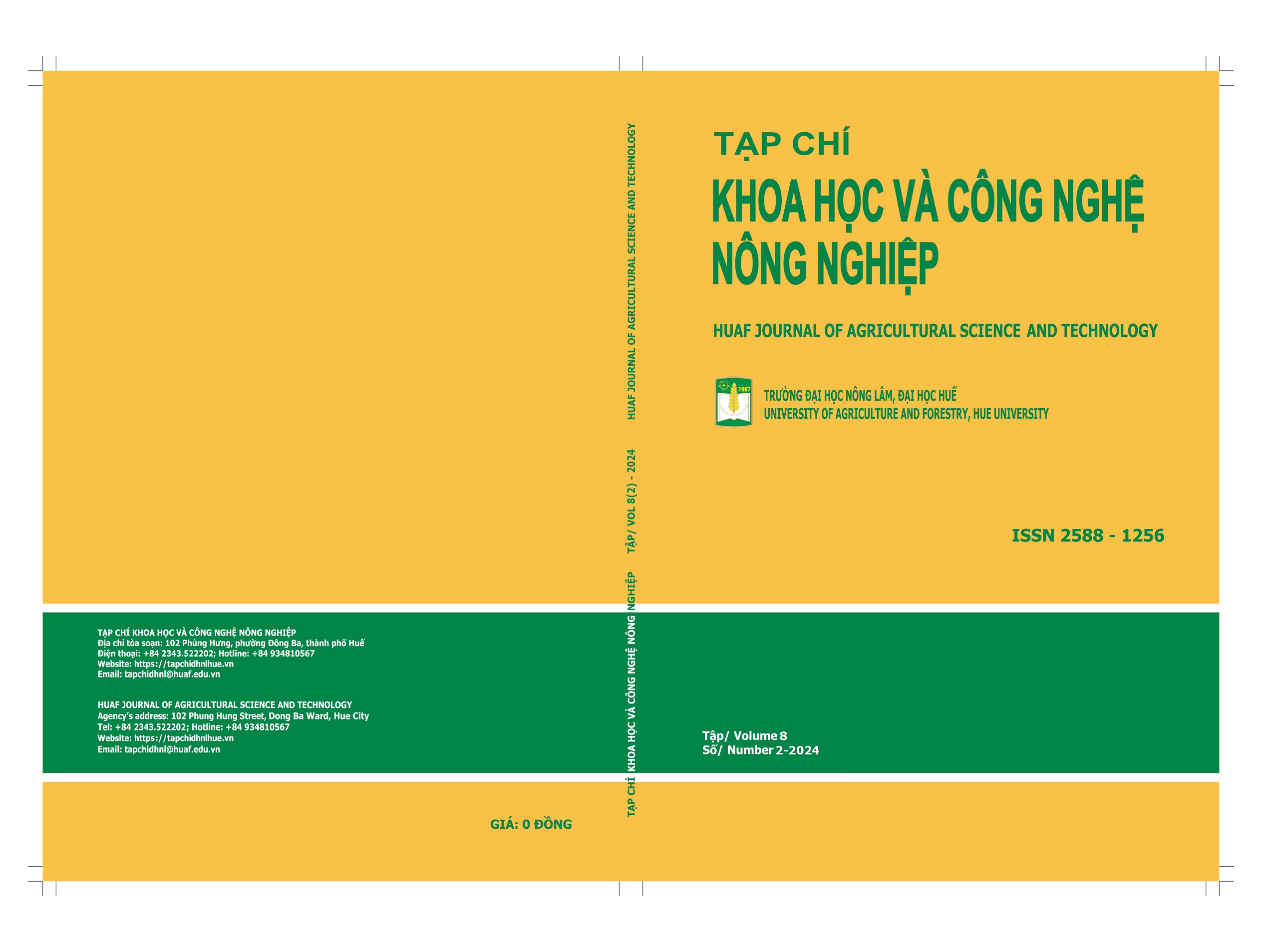##plugins.themes.huaf_theme.article.main##
Abstract
This study investigates the impact of raw materials and thermal processing (steaming, blanching, drying) on the quality of matcha green tea powder. The raw material used was Truoi tea leaves from Loc An commune, Phu Loc district, Thua Thien Hue province which were collected from traditional Truoi tea gardens with natural shade from native old-growth trees. The quality of these tea leaves was analyzed, including moisture content, tannins, polyphenols, soluble matter, chlorophyll, HUE value, and sensory evaluation, as well as the changes in these quality parameters under different thermal processing conditions. The results showed that the raw materials from the naturally shaded tea garden were suitable for matcha production due to their lower tannin content of 17.22% dry matter (dm), higher total chlorophyll content of 3.37 mg/g dm, and higher color value of 120.00° Hue compared to the unshaded garden. The appropriate thermal processing method for enzyme inactivation was found to be steaming at 100°C for 2 minutes, followed by convection drying with hot air at a drying temperature of 50°C for 180 minutes. The final matcha powder had a moisture content of 4.38%, soluble matter of 42.92% dm, chlorophyll of 2.83 mg/g dm, and polyphenols of 12.76% dm. The product also met the microbiological requirements of Vietnamese standards.

